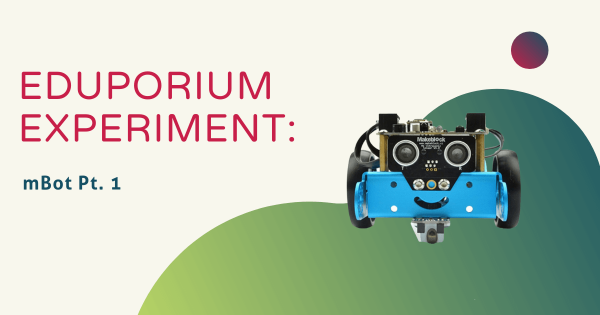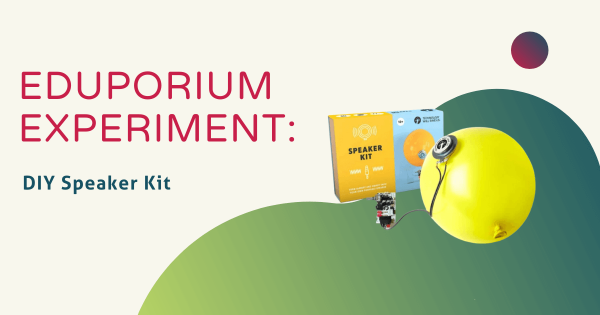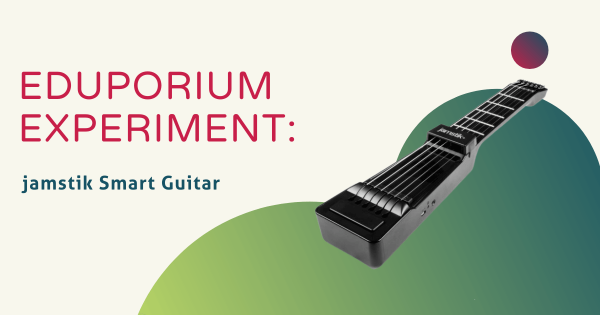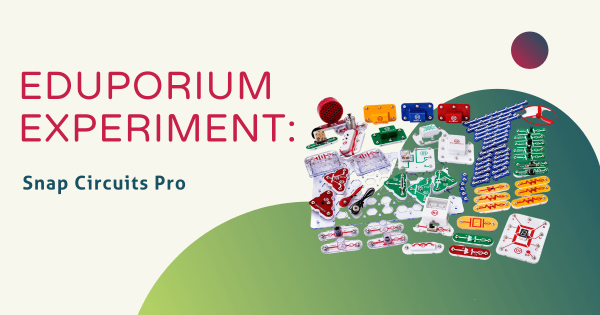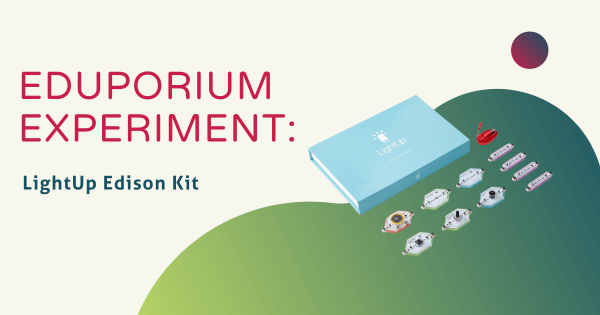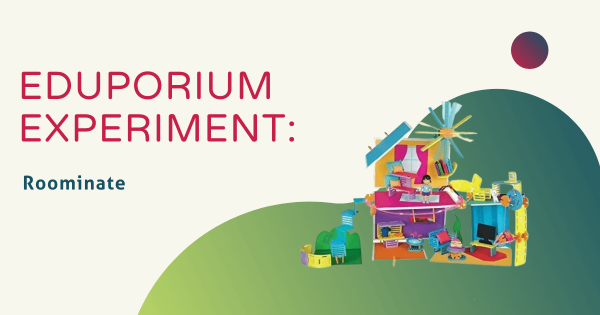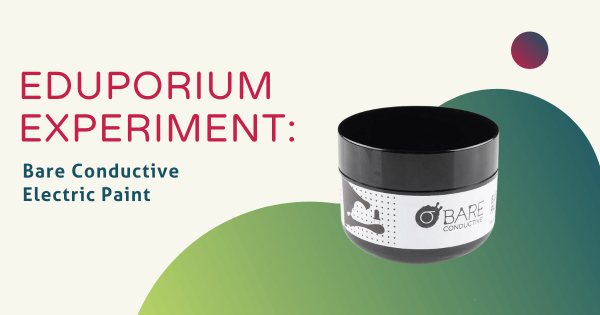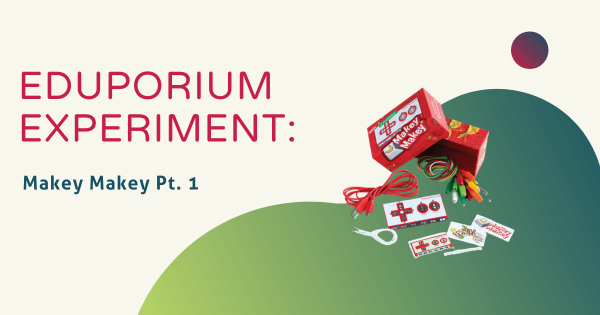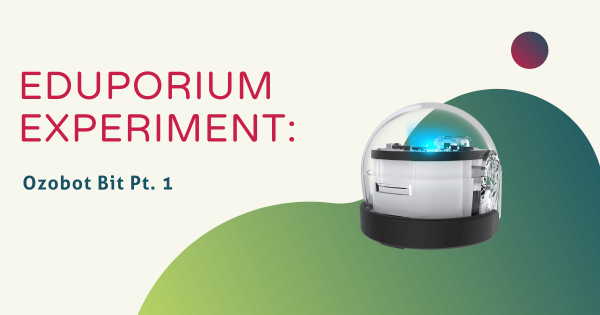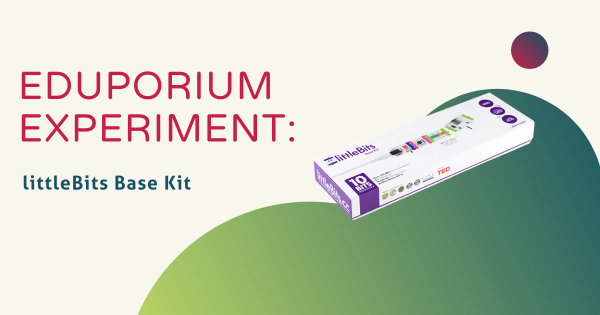Want to build something and experience the fun of seeing it in action immediately? Then you want the mBot in your life! Ideal for early STEM education, mBot is a great toy that helps kids master the tricks of creative assembly and its built-in Arduino board helps them explore basic circuitry as well. It’s super easy for students to build
Eduporium Experiment
Our Eduporium Experiment series is one of our longest running blogs. Whenever we add new STEAM solutions to our store, we try it out so we can learn all about it. Over the years, we've covered dozens of top STEAM teaching tools, offering our first-hand insights and tidbits for educators. We believe this content gives K–12 teachers valuable information when it comes to using various STEAM solutions with their students. Our team analyzes products from different points of view and even considers implementation strategies in different educational environments. Whether it's most useful in the makerspace, library, or in the general classroom, we're happy to continue providing these helpful guides. You'll even find classroom-ready STEAM projects to try with your students. Browse through the posts or use the search bar on the left to find exactly what you're looking for.
In each 'experiment,' we provide key background information on the STEAM tool being featured. From there, we explore an actual project. This allows us to discover subtle tricks and hints that are extremely helpful for educators to know. Whether it's a coding tool, educational robotics solution, or even an engineering kit, we do our best to cover everything educators are investigating. As the Eduporium Experiment series has expanded, we've come a pretty long way. Now, you can find dozens of helpful articles that may include step-by-step project guides, troubleshooting suggestions, and even our thoughts on what makes each STEAM tool worthwhile for 21st century students. Find our insights on integrating STEM tools like the Bee–Bot, Finch 2.0, Ozobot Evo, micro:bit V2, and so many more!
-
Eduporium Experiment | DIY Speaker Kit
It can be a little daunting when first opening this kit from Tech Will Save Us—at least, I know I felt that way, but it’s actually a lot simpler than it looks. Following the instructions in the box, I was able to learn how to solder and combine the materials to make a real working speaker. I have no real -
Eduporium Experiment | jamstik Smart Guitar
Few modern EdTech tools can effortlessly mix a love for art with technological proficiency, but the Jamstik is able to do that and more! With its Bluetooth capabilities, the jamstik links with any iPad or iPhone and interactively teaches kids to play the guitar while enhancing their overall technological proficiency. -
Eduporium Experiment | Snap Circuits Pro
I love Snap Circuits and felt like it was such a cool way to learn circuits. It’s extremely simple to get started and the opportunities for crative design and application are everywhere. Its super easy to build all types of devices from lamps to alarms and the best thing is that there are literally hundreds more waiting in the three -
Eduporium Experiment | LightUp Edison Kit
Circuitry is all about connecting and closing circuits and the LightUp Edison Kit is the perfect way to teach the basis by combining learning with project-based fun. Using intuitive magnetic attachments, children can experience the fun of building circuits while simultaneously engrossing themselves in a real-life STEM lesson! -
Eduporium Experiment | The Roominate Kits
There are few toys more iconic than the dollhouse. Almost every little girl has one and it’s easily always been one of the most popular products out there. Roominate is a dollhouse, but what sets it apart is its modern twist. Users can customize it however they want and learn a thing or two about circuitry in the process. -
Eduporium Experiment | Bare Conductive Electric Paint
Few modern learning tools are as unique and engaging as Bare Conductive’s Electric Paint. That’s right—it really is paint that carries electricity! What makes it truly sensational for learning is that you can paint or draw just about anything and the paint acts as a conductor. The biggest obstacle, though, is finding a purpose for the paint. -
Eduporium Experiment | Makey Makey Pt. 1
When I first saw the Makey Makey, I didn’t know quite what to expect. It’s supposed to be an extension of my computer’s keyboard and almost anything can be attached to it. I decided to give it a try and test out what this board could do. I followed the instructions in the box. It was daunting just looking at -
Eduporium Experiment | Ozobot Bit Pt. 1
As you might have guessed, I was surprised when I learned that its Ozoblockly software could actually command this tiny bot to execute a bunch of different actions on the spot—all the way from swerving to spinning and responding to color-coded cues! Learn how the original Ozobot model set the tone for coding instruction. -
Eduporium Experiment | littleBits Base Kit
There’s a rising popularity, thanks to the Maker Movement and the increasing importance of STEM education, for educational toys. One of the best for engaging young learners while promoting creativity is littleBits—an electronic version of LEGO. Despite its intimidating appearance, littleBits is actually really simple to use.




